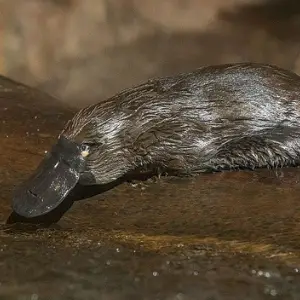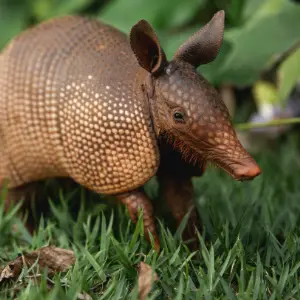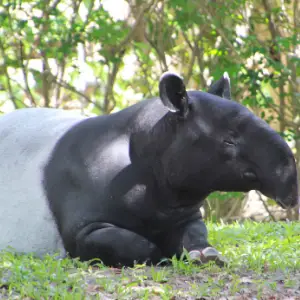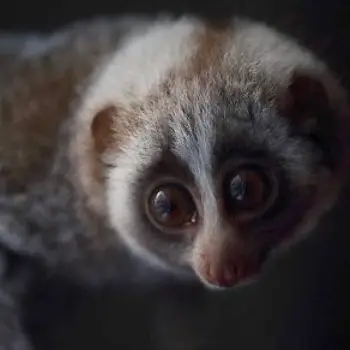Hairless animals are a rare breed, but they do exist. More precisely, these special creatures are called “hairless” or “naked” animals because they don’t have fur covering their skin like most other mammals.
Pet owners may be surprised to learn that there is a wide range of hairless breeds, from the rat-like naked mole-rat to the elegant bald eagle.
The most well-known hairless animal is probably our closest evolutionary relative: the chimpanzee.
The list below includes some of these fascinating animals and should provide pet owners with more information about this unusual topic.
If you are a fan of animals, then this list is for you.
- Slow Loris
- Fuzzy Anteater
- Platypus
- Armadillo
- Tapir
- Llama
- Sloth
This article covers every animal that has hair instead of fur. If you have ever seen an animal with hair rather than fur and wondered what it was called, this list will tell you!
Every animal on the list is different, but they all have one thing in common: their species does not produce any type of fur.
Slow Loris
The Slow Loris is a small primate from Southeast Asia with a round head and short arms, making it resemble an otter or squirrel. They have long hair on their backs that can be black, brown, grayish-brown to light brown in coloration.
The good thing with the hair on a Slow Loris is that it is so long that it helps to keep their body temperature regulated and protects them from the sun.
The Slow Loris has a prehensile tail with which they hang upside down in trees, this can be used as an extra limb when climbing steep tree trunks or branches.
Fuzzy Anteater
The fuzzy anteater is an insectivorous mammal that lives in Central and South America. They have a long, cylindrical body with short limbs with five toes on each foot.
The fuzzy anteater has soft hair which is usually gray or brown but it can range from black or dark red. The hair on a Fuzzy Anteater is short and provides uniform insulation.

The soft hair helps protect the anteater from parasites and also makes it easier to hunt in the long grass.
The Fuzzy Anteater can feel sound vibrations through its hairs, this helps them find prey by detecting insects moving around underground.
The Fuzzy Anteater will eat ants, termites, beetles, crickets and other insects by breaking open their nests with the sharp claws on its front paws. It then turns them over to extract the edible portions from inside before swallowing it whole.
Platypus
The animal Platypus is native to Eastern Australia and Tasmania. It is a semi-aquatic mammal with webbed feet, an otter-like tail that can be used for swimming or as propulsion when on land, short round ears, and specialized features of the head to enable them to find food in the water.

The Platypus has hair that is thick and coarse.
It has thick brown hair which traps air close to its body that it uses in buoyancy to help it keep its head above water.
Its hair is thick and coarse, with the insulating hair about four inches long so that it can remain warm in cold temperatures while retaining enough air close to its skin for warmth when out of the water.
Armadillo
The hair on an Armadillo is rubbery, leathery hair which is not water-resistant.
The animal has tough protective armor on its back and it’s capable of rolling itself into a ball to protect the vulnerable parts from predators.

Armadillos have no fur but they do have hairs that are about one inch long on their body.
The hair is used for insulation when the animal is out of water.
Armadillos live in warm climates so they do not need as much protection from cold temperatures as other animals with fur would.
Tapir
This animal does not have much hair but it does have some hair on the head and along its back.
The Tapir is a plant-eating animal that has thick skin rather than fur to help it stay warm.

There are about four different species of tapirs, all found in Central America or South America including Baird’s tapir, Lowland tapir, Mountain tapir.
Llamas
The llama is an animal that has no fur but the long hair that is usually brown in color.
Llamas are found in the Andes Mountains and they can be used for carrying heavy loads including people or supplies up steep mountain paths as well as their own weight of about 250 pounds.
The llama’s wool provides it with insulation from cold temperatures, a key factor in helping it survive in the harsh mountains of South America.
Traditional uses for llamas include their wool, meat, and hides but today they are more often used as a tourist attraction or animal pet.
Llamas are also raised by humans to produce fiber which is then spun into yarn and woven into the fabric that can be made into jackets, hats, gloves.
Sloth
Sloths are mainly found in the rainforest region of South America and Central America, but there is one type that lives on an island off the coast of Panama called Coiba Island.
Sloths have a low body temperature due to their slow metabolism and they also move so slowly because it takes them about 20 seconds for every step.
The hair on a Sloth helps it to survive in the rainforest because it is able to absorb sunlight and cool off.
The hair on a sloth helps them survive in the rain forest by absorbing light to help with cooling down, but they also have thick fur over their ears and around their eyes for protection from too much sun.

